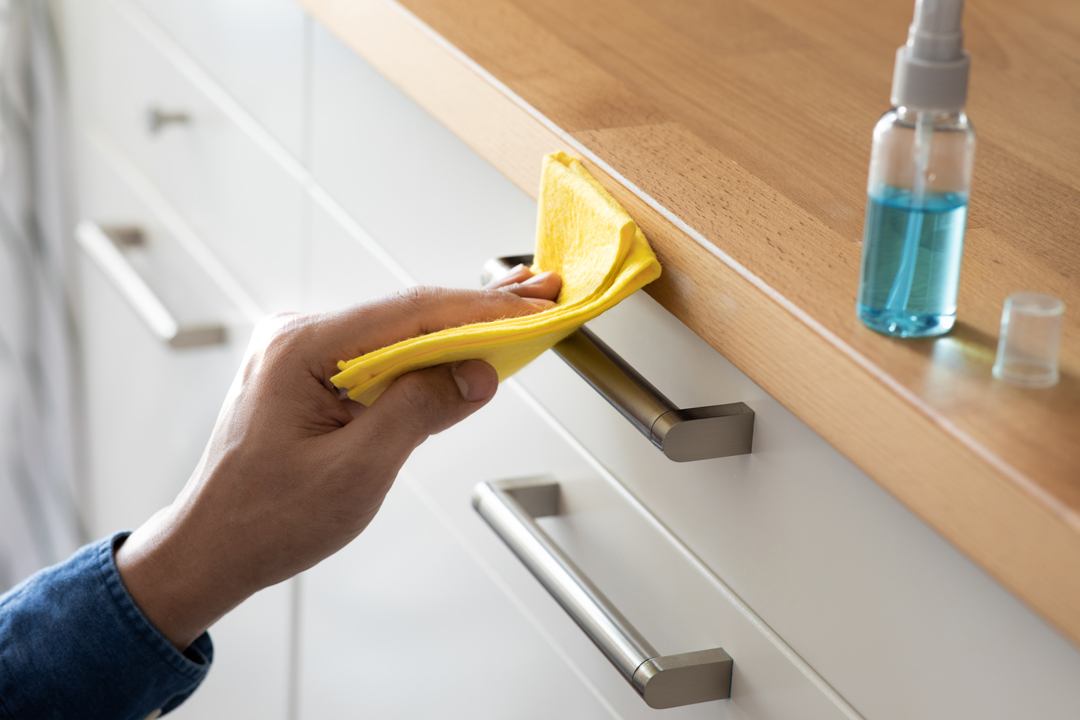Bacteria and Viruses in Your Own House? You Should Clean Now!

Bacteria and Viruses in your Own House?
Do you change your bed sheets or towels often? What about your toothbrush? Do you clean your refrigerator, sanitize your door handles or bleach your kitchen sink the way experts say you should? Well, good for you. But that will still not get you rid of all the germs and bacteria lurking in your house.
That’s because our tiny roommates are everywhere and some even divide every 20 minutes at the right temperatures, according to the Society for General Microbiology. So, no matter how much we clean and scrub, some spots and objects are still contaminated, especially high-contact surfaces.
“Germs can survive for a longer period of time on non-porous surfaces (like stainless steel and plastics), than porous surfaces (such as fabrics and tissues),” says Rossana Rosa, M.D., UnityPoint Health infectious disease provider. “It’s estimated viruses can live anywhere from one to seven days on non-porous surfaces, but they quickly lose their ability to cause infection.”
Fortunately, not all bacteria are harmful. Some microorganisms can have beneficial effects such as protecting their host against allergies and severe asthma. On the other hand, the following bacteria and fungi can really do a number on your health:
- Staphylococcus aureus, or staph
- yeast and mold
- Salmonella
- Escherichia coli, or E. coli
- fecal matter
The newest addition to the list, the new coronavirus, known for causing COVID-19, can also resist on many surfaces in your home if they are not properly cleaned. These are the New Coronavirus Symptoms the CDC Wants You to Watch Out For!
But which are the germiest spots in your house you need to clean right away? Let’s take a tour of your home and find out!
The kitchen
Let’s start with the kitchen, where, according to the National Sanitation Foundation (NSF), more than 75 percent of used kitchen sponges and rags are covered in different species of bacteria such as Salmonella, E. coli, and fecal matter. 362 to be exact.
Other germy items in the kitchen:
- cutting boards
- coffee maker
- refrigerator
- kitchen sink and countertops
The solution? You can kill harmful bacteria by cleaning the kitchen surfaces with bleach, rubbing alcohol or disinfectant wipes with over 60 percent ethanol or 70 percent isopropanol. The latter is especially recommended against SARS-CoV-2.
Speaking of cleaning, check out these 8 Must-Have Smart Gadgets for the Ultimate Spring Cleaning and kiss elbow grease goodbye for good!
The bathroom
Let’s move on to another part of your house that’s lurking with germs and bacteria: the bathroom. The moisture caused by hot showers makes it an ideal environment for germs to grow and diversify.
Contrary to what you might think, the toilet is not the germiest spot in the bathroom. You might want to sit down for this one: “There’s more fecal bacteria in your kitchen sink than there is in a toilet after you flush it. That’s why your dog drinks out of the toilet. He’s smarter than you think,” said microbiologist Charles Gerba, a professor of public health, environmental science and immunology at the University of Arizona.
In fact, if you flush with your lid up you spatter fecal matter and toilet water 6 feet into the air, so thoroughly clean these other spots as well:
- shower tub (this shower spray will help you keep it clean and fresh)
- drains
- faucets
- floor area around the toilet (this multipurpose cleanser will make every surface shine like brand new)
- bath towels (they need to be changed every three or four days at least so you’d better stock up on these soft, cotton towels)
- toothbrushes
You can use disinfectant to clean surfaces and handles every day or do a full sweep once a week.
Home office and living room
The living room is a space you share with various members of your family or even house guests. Remote controls and tablets win the prize for the germiest items in a living room, but you should also pay special attention to carpets that can grow yeast and mold.
In fact, according to NSF, a carpet may be dirtier than a city street! This carpet dry cleaner powder might be just what you need to get rid of stains, smells and moisture that contributes to the growth of bacteria and mold.
When it comes to home office items, your computer keyboard is dirtier than you think, containing 400 times more bacteria than a toilet seat, if you can believe that! That’s why it’s important to clean it frequently. This cleaning gel should do the trick but if you want to sanitize your keyboard as well, use a standard disinfectant wipe such as this one.
What else should you worry about?
Other spots that are packed with nasty bacteria include:
- bathroom light switches
- refrigerator handles
- stove knobs
- microwave handles
- makeup brushes
- cell phones (if you want to be extra safe, you can use electronic-specific cleaning supplies such as this clinically proven smartphone sanitizer). See also Best Quarantine Gadgets to Get You Through the Coronavirus Pandemic for other suggestions.
- keys
- wallet and money
You can clean these areas and items once a week with disinfecting wipes. This will also help you get rid of any SARS-CoV-2 that may reside on these plastic or steel surfaces.




